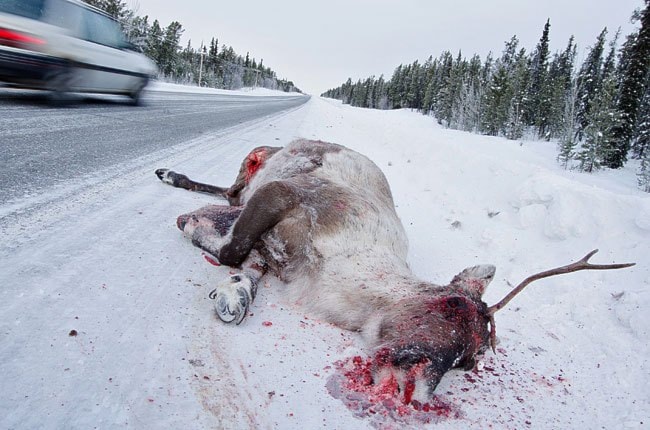The Yukon government’s proposals for the Peel watershed are based on some spurious science, say several Yukon graduate students.
“There was very little original research that’s been done to back up the numbers that are in these four new concepts,” said Tara Stehelin, a PhD candidate with the University of Alberta, who also teaches and studies at Yukon College.
For instance, the threshold numbers that are used to limit the disturbance of caribou habitat were pulled straight from North Yukon Regional Land Use Plan, and were themselves based on computer models rather than actual scientific field studies.
And that could be bad news for the Peel’s caribou’s populations, say the students.
That’s because caribou tend to avoid anything larger than a horse trail, and under the government’s plans access roads will be permitted in up to 86 per cent of the region.
The density of those roads varies depending on the zone. But even if road construction is limited to 200 metres for every square kilometre within a Restricted Use Wilderness Area - which covers a significant portion of the Peel under all four concepts - caribou populations would be in jeopardy, according to peer-reviewed research cited by the students.
Under the four plans there could potentially be 14,000 to 16,000 square kilometres of land disturbed. Since caribou tend to stay between 250 to 500 metres away from roads, that means, on the high end, 24 per cent of the Peel would be a no-go zone for caribou.
At that level of disturbance, the students calculated that there is only about a 65 per cent chance of the Peel’s caribou herds maintaining a self-sustaining population.
It could be even more dire.
“One of our colleagues did an assessment using computer simulation to see where caribou are in the Peel and what areas they avoid and he found caribou weren’t found in areas where there were roads for up to 70 kilometres,” said Stehelin.
“The bottom line is I think we need to do some more research,” she said. “I think that we don’t know what the avoidance zone would be - we’re making an assumption based on other studies.”
It’s something that the government is taking under consideration, said Manon Moreau, director of corporate policy and planning for Energy Mines and Resources.
The public consultation period for the Peel Watershed Regional Land Use Plan closed on Monday.
The territory is now about to start consulting with the affected First Nation governments, while the Department of Energy, Mines and Resources goes through all the submissions from the public it received over the last few months, said Moreau.
“We’re putting in a lot of effort right now just to gather all that information. Whether it came through online, through the website, the faxes, all the letters, even the written comments we received at the open houses, it’s a lot of information for us to go through and compile,” she said.
She said she’s looking forward to seeing the analysis of all the input from everyone - including the grad students - who took the time to participate in the process.
“That’s exactly why we are going out for consultation,” said Moreau. “It obviously takes a lot of time for those grad students to put that type of analysis together and that’s going to assist us when we are going through all the feedback that we’ve gathered over the public consultation period.”
In making their submission the students tried to stick to the science and leave their emotions at the door, said Mike Tribes, who is working on a master’s degree in environmental science.
“As soon as you establish yourself in one camp, the other camp won’t listen to you any more, but if you can sort of sit in the middle and step away from that whole camp and say, ‘This is the science,’ then maybe both sides will listen a little bit,” he said.
“I think information can benefit all land users,” added Stehelin. “It would benefit every camp no matter what we decide to do.”
According to their analysis the plan that comes the closest to protecting the caribou would be the original one proposed by the Peel planning commission.
But no matter what happens in the Peel, both Tribes and Stehelin hope that the government will take the time to do more research, not just on how caribou will be affected, but to establish some baseline data of the ecology of the entire watershed while it still exists in a relatively pristine state.
“With the Peel we have this opportunity because it is an undisturbed area. We can actually establish a baseline based on what’s there now,” said Tribes. “Then we can go in with our eyes open when we actually do the land-use planning.
“Take it a step at a time, as opposed to, ‘Let’s open this whole 65,000-kilometre area up to the same type of development and watch us make the same mistake that they’re making in Alberta.’”
Contact Josh Kerr at
joshk@yukon-news.com
